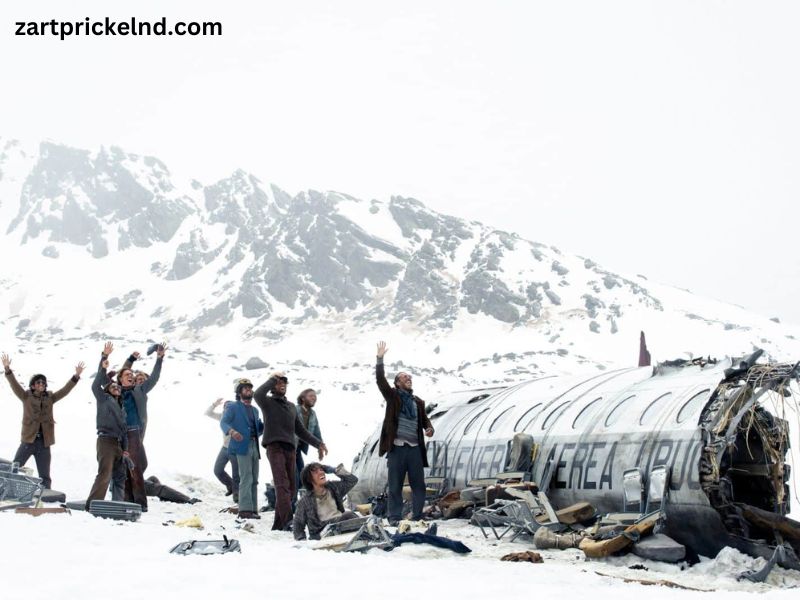The story of the “Society of the Snow” is one that resonates deeply with themes of survival, resilience, and the human spirit. Based on the harrowing true events of the 1972 Andes plane crash involving Uruguayan Air Force Flight 571, this tale has captivated audiences worldwide through various media adaptations, including films and documentaries. This article will delve into the real-life experiences of the survivors, the significance of the photographs that document their ordeal, and the broader implications of their story on society.
The Tragic Event
On October 13, 1972, a plane carrying a rugby team, along with their friends and family, crashed in the remote Andes Mountains. The harsh conditions, including freezing temperatures, snow, and altitude sickness, made survival a daunting challenge. Of the 45 passengers on board, only 16 survived the crash and the subsequent ordeal. Stranded in a desolate and icy landscape, these individuals faced unimaginable circumstances.
The Reality of Survival
In their desperate struggle for survival, the passengers were forced to confront an ethical and moral dilemma: resorting to cannibalism to stay alive. They initially relied on the small amounts of food they had, but as days turned into weeks without rescue, the situation grew increasingly dire. The survivors made the harrowing decision to consume the bodies of their deceased friends and family members. This act, while morally complex, was seen by the survivors as a necessity for survival.
Real Photos: Documenting the Ordeal
Photographs taken during and after the crash serve as a stark reminder of the human capacity for endurance and the extremes of survival. Although the most widely circulated images come from films and dramatizations, some real photos have emerged that illustrate the reality of the survivors’ experience.
The Impact of Visual Documentation
- Personal Testimonies: Photographs can powerfully convey emotions that words often fail to capture. Images of the survivors, their faces etched with despair and determination, encapsulate the complex emotions experienced during their ordeal.
- Historical Context: The photos also provide a historical context that transcends mere storytelling. They document the harsh conditions the survivors faced, from the snowy landscapes to the makeshift shelters they created from the wreckage. These visuals bring to life the stark reality of survival in extreme conditions.
- Cultural Reflection: The survivors’ experiences prompt reflections on cultural attitudes toward life, death, and morality. Their story raises questions about the human instinct to survive against all odds, illuminating the sometimes shocking choices individuals must make when confronted with dire circumstances.
The Search for Rescue
Rescue efforts took over a week, with search parties initially believing that all aboard the flight had perished. The survivors faced the additional trauma of waiting for help that never came. They resorted to leaving messages in the snow and creating signal fires, but the remote location made them invisible to search teams.
The Power of Human Connection
During their time in the mountains, the survivors formed deep bonds that would last a lifetime. Their shared experience created a “society” among them—a network of support and understanding forged in the crucible of suffering. This camaraderie played a crucial role in their mental and emotional survival.
The Journey Home
After 72 days stranded in the Andes, the survivors finally made the difficult decision to hike out in search of help. Two of them embarked on a treacherous journey across the mountains, eventually encountering a Chilean shepherd who assisted them in alerting authorities. This act of bravery led to the rescue of the remaining survivors.
Legacy of the Society of the Snow
The story of the Society of the Snow extends beyond mere survival; it encapsulates profound themes of human resilience, morality, and the will to live. The survivors went on to live remarkable lives, sharing their experiences through interviews, books, and documentaries.
Cultural Impact
- Literature and Film: The story has been adapted into various films, documentaries, and books, each exploring the themes of survival and the moral complexities involved. These adaptations serve not only to entertain but also to educate audiences about the extremes of the human experience.
- Moral Questions: The ethical dilemmas faced by the survivors have sparked discussions about survival instincts and moral boundaries. How far would you go to survive? What moral lines would you cross? These questions resonate with audiences, encouraging reflection on the human condition.
- Public Awareness: The story has brought attention to the psychological effects of trauma and survival situations. Survivors have spoken about the long-term impacts of their ordeal, including PTSD and the need for mental health support for those who have faced similar situations.
The Role of Photography
The real photographs associated with the Society of the Snow, while limited, have played a crucial role in communicating their story. They serve as visual artifacts that bridge the gap between past and present, helping audiences understand the gravity of the situation.
- Emotional Resonance: The photographs capture raw human emotions—fear, despair, and ultimately, hope. They remind us that behind every survival story are real people with complex emotions.
- Documentation of History: These images serve as a historical record, providing a glimpse into the realities of survival in one of the harshest environments on Earth. They help contextualize the survivors’ experiences within a broader historical framework.
- Inspiration: The photographs inspire resilience and the indomitable human spirit. They remind us of the power of hope and the strength found in community, even in the face of unimaginable challenges.
Conclusion
The story of the Society of the Snow is one of survival against the odds, steeped in moral complexity and human resilience. The real photographs that document this ordeal serve as poignant reminders of the emotional and psychological struggles faced by the survivors. They encapsulate a narrative that goes beyond mere survival, prompting deep reflections on the nature of humanity, morality, and the human spirit.
As we remember the events of 1972 and the individuals who endured such a harrowing experience, we are reminded of our own capacity for resilience and the power of community in overcoming adversity. The legacy of the Society of the Snow continues to inspire, educate, and challenge our understanding of what it means to survive—and what it means to be human.



